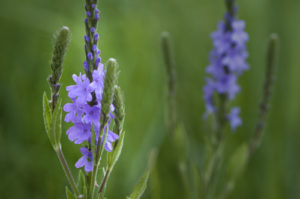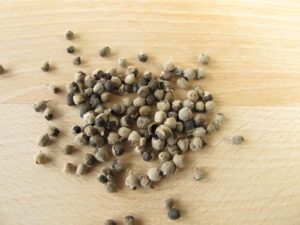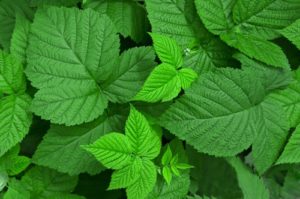In this article we will provide you with a list of the 15 best medicinal herbs; essential medicinal herbs proven over time to be helpful in treating dozens of health problems. Learn how to use them to treat health conditions in a natural way. Also, always remember to consult your physician before using any medicinal herbs and follow his or her instructions carefully.
1. Black Cohosh
Black cohosh is an herb known and studied in relation to the treatment of menopause. It also helps alleviate the pain associated with PMS. It is an alternative to hormone medications that reduces the symptoms of menopause, such as hot flashes, night sweats, mood swings, vaginal dryness, and heart palpitations.It can also be used as a remedy for migraines, as well as for sleep disorders, especially those related to menopause. Black cohosh is an anti-inflammatory and may be used to alleviate symptoms of arthritis. Before using black cohosh, we recommend that you consult with your physician.
2. Wild Yam
A classic liver tonic, the wild yam balances the hormones and alleviates morning sickness. Look for cultivated sources, as it has been exploited in nature. It is believed that wild yam improves female fertility, although, according to the American Cancer Society, wild yam by itself does not produce progesteron in the body, and therefore has no effect on fertility.3. Lion’s Tail
Lion’s Tail is commonly utilized to remedy anxiety or insomnia, as it acts as a calmant. In the same way as it has sedative powers, it also is a good antiarrhythmic agent and reduces tachychardia and palpitations. It may also be applied like oxytocin, which helps stimulate the evacuation of the uterus via mymetrial contractions. In addition, it is used for alterations of nerves-related cardiac rhythm and helps in cases of hyperthyroidism.4. Sage
It helps the digestion, asthma, bacterial and fungal infections, bile, bits, calm and stimulate the nervous system, relieve colds and a cough, etc. The essential oil obtained from sage improves concentration and may play a role in treating memory loss associated with Alzheimer’s.It may also be used externally as a rubefacient to calm painful illnesses such as muscle rigidity, rheumatism, and neurological conditions. Also, it helps relieve nervousness, anxiety, headaches, stress, and fatigue. It should not be used by pregnant women or breastfeeding mothers, or anyone suffering from epilepsy. The plant is toxic in excess or when taken over a prolonged period of time, although a toxic dose is very large.
5. Blue Verbena

Verbena has been useful by herbal healers for centuries throughout history, however, there is a lack of studies about this herb in humans. The curative properties of verbena are mainly attributed to its bitter and stimulating effect on the liver and other organs, as well as its relaxing effect on the nervous system.
It is a useful plant for many ailments as a painkiller and a natural tranquilizer, an expectorant used to treat chronic bronchitis, and an antirheumatic to lessen joint pain. Herbalists consider verbena especially useful when a depression is related to a chronic disease. As an additional benefit, it helps cure whatever pain is caused in the liver.
6. Ginseng
Ginseng is used as a general tonic by modern western herbalists, as well as traditional Chinese physicians. It is thought that it stimulates and reinforces the central nervous system in cases of fatigue, physical exertion, weakness caused by illnesses and injuries, and prolonged emotional stress. The relationship ginseng has with the nervous system and its capacity to promote relaxation make it very useful for conditions related to stress, such as insomnia and anxiety.Athletes can benefit from using ginseng for a better resistance. It can also be a sexual tonic and aphrodisiac, useful in maintaining reproductive organs and sexual drive in old age, and to help prevent or help reverse erectile dysfunction associated with prostate disease and stress. Studies in animals and humans have demonstrated that ginseng possibly reduces the appearance of cancer.
7. Schisandra
Schisandra is used to increase resistance to disease and stress, raises energy levels, physical performance, and resistance. It is also used to prevent premature aging, increase productivity, normalize blood sugar and blood pressure, to stimulate the immune system, and accelerate recuperation following surgery.It also is used to treat liver disease (hepatitis) and protect this organ. Other uses of the magnolia vine include the treatment of high cholesterol, coughs, asthma, sleep disorders (insomnia), nervous pain, premenstrual syndrome, chronic diarrhea, dysentery, night sweats, spontaneous sweating, erectile dysfunction, physical exhaustion, depression, irritability, and loss of memory.
Some people use schisandra to improve vision, protect against radiation, prevent infection, increase cellular energy level, counteract the effects of sugar, and improve adrenal gland health.
8. Hawthorn
Hawthorn is used for heart and blood vessel disease, such as congestive heart failure, chest pain, and irregular heartbeats. It is also used to treat low and high blood pressure, arteriosclerosis, and high cholesterol. Until now, research suggests that hawthorn may be effective in treating congestive heart failure, but there has not been sufficient investigation of the other uses related to the heart to know if it is effective in them.Some people use hawthorn to alleviate problems related to the digestive system, such as indigestion, diarrhea, and stomach pain. It is also used to reduce anxiety, like a sedative, to increase urine production, and stop menstrual problems. It is also used to treat tapeworm and other intestinal infections.
9. Dandelion
Dandelion is used for many different conditions, but so far, there is not sufficient scientific evidence to determine if it is effective or not for any of them.Dandelion is used for the loss of appetite, stomach pain, intestinal gases, gallstones, joint pain, muscle pain, eczema, and bruising. It has been used to increase urine production and as a laxative to increase bowel movements. It also is used as a skin toner, blood tonic, and digestive tonic.
Some people use dandelion to treat infection, especially viral and cancerous ones. In foods, dandelions are used in green salads, soups, wines, and teas. The roasted root may be substituted for coffee.
10. Vitex

Vitex agnus-castus is sometimes called “chaste tree”. It is used for irregular menstrual cycles, PMS, a more severe form of the premenstrual syndrome called premenstrual dysphoric disorder, and the symptoms of menopause. It is also used to treat fibrocystic breasts, prevent involuntary abortion in women with low levels of the hormone called progesterone, and increase breast milk.
Some men use Vitex to increase their urine flow, for the treatment of benign hyperplasmia of the prostate, and to reduce sexual desire. Historians say that monks used to chew parts of the the chaste tree in order to help staying celibate easier.
Vitus agnus-castus is also used for acne, nervousness, dementia, joint problems, colds, stomach pain, spleen disorders, headaches, migraines, pain in the eyes, inflammation, and swelling of the body. Some people apply vitex to the skin to eliminate parasites and to prevent insect bites and stings.
11. Licorice Root
Licorice root may be used for a variety of problems in the digestive system such as stomach ulcers, stomach pain, cholic, and continual inflammation of the stomach lining (chronic gastritis). Some people use it for sore throats, bronchitis, coughs, and bacterial or viral infections. Licorice root is also used for osteoarthritis, systemic lupus erythematosus, liver disorders, malaria, tuberculosis, food poisoning, and chronic fatigue syndrome.12. Ginger
Ginger is commonly used to treat various kinds of stomach issues, including dizziness, nausea, cholic, stomach discomfort, gas, diarrhea, nausea caused by cancer treatments, nausea and vomiting after surgery, as well as the loss of appetite.Other uses include alleviating pain from arthritis or muscle pain, menstrual pain, upper respiratory tract infections, cough, and bronchitis. Ginger is also often used for chest pain, back pain, and stomach pain.
Some people apply its fresh juice to the skin to treat burns and ginger oil is sometimes to the skin to reduce pain. In foods and drinks, ginger is sometimes used as an aromatic spice. One of the chemical products in ginger is also an ingredient in laxative medications, antigas, and antacid.
13. Nettle
Nettle is used for many conditions, but there is still not enough scientific evidence to determine if it is truly effective or not in any of them.The root is utilized for urinary problems related to an enlarged prostate. These problems include nocturia, the need to urinate too frequently, pain while urinating, the inability to urinate, and an irritable bladder.
The stem of the nettle can also be used for ailments of the joints, as a diuretic, and as an astrigent. The upper parts are used together with large amounts of liquids in “irrigation therapy” for urinary tract infections, urinary tract inflammation, and gallstones. The uppermost parts may also be used for allergies, hay fever, and osteoarthritis.
Some people use the upper parts of nettle for internal hemorraging, including uterine hemorraging, nosebleeds, and intestinal bleeding. It is also used for anemia, poor circulation, enlarged spleen, diabetes, or other endocrinal disorders, stomach acid, diarrhea and dysentery, asthma, pulmonary edema, hives, cancer, prevention of the signs of aging, blood purification, healing wounds, and as a general tonic.
14. Lady’s Mantle
This and others in the Rosaceae family have been widely used in popular medicine throughout Europe. Lady’s mantle helps reduce pain associated with periods and also to help improve heavy bleeding. It also has a role in working to alleviate the symptoms of menopause. As a useful uterine emmenagogue, is is used in both menorrhagia and metrorrhagia. As an astrigent, it acts as a treatment for diarrhea, a mouthwash for sores and ulcers, and a gargle for laryngitis.15. Raspberry Leaves

Red raspberry leaves are used for gastrointestinal tract disorders, including diarrhea, respitory system disorders, including flue and swine flu, as well as heart problems, fever, diabetes, and vitamin deficiency. It is also used to promote sweating, urination, and bile production. Some people use it to purify the skin and blood.
Some women use raspberry leaves during painful menstruation, heavy periods, nausea during pregnancy, and prevention of involuntary abortion. Red raspberry leaves are applied directly to the skin for sore throats and hives.
Source: healthdigezt.com

Tidak ada komentar:
Posting Komentar